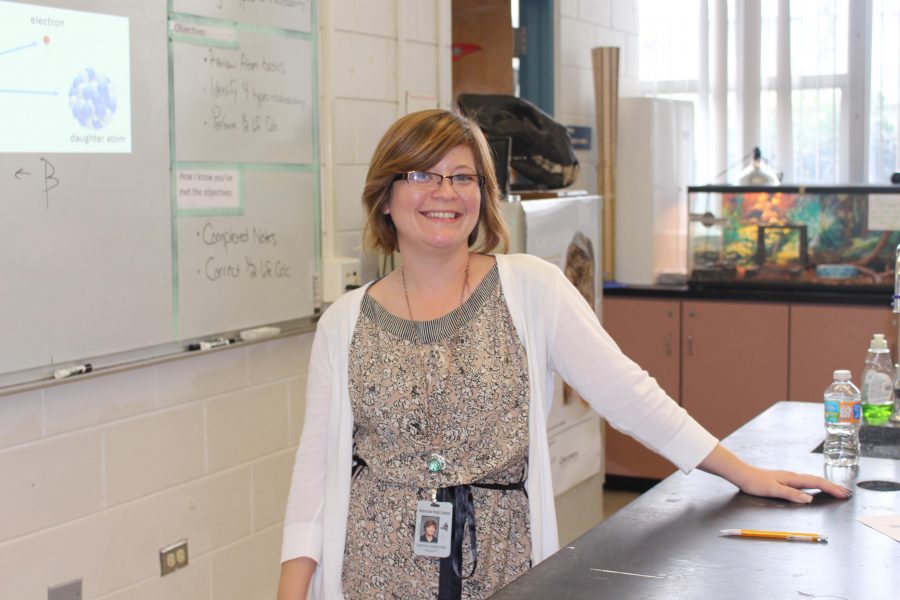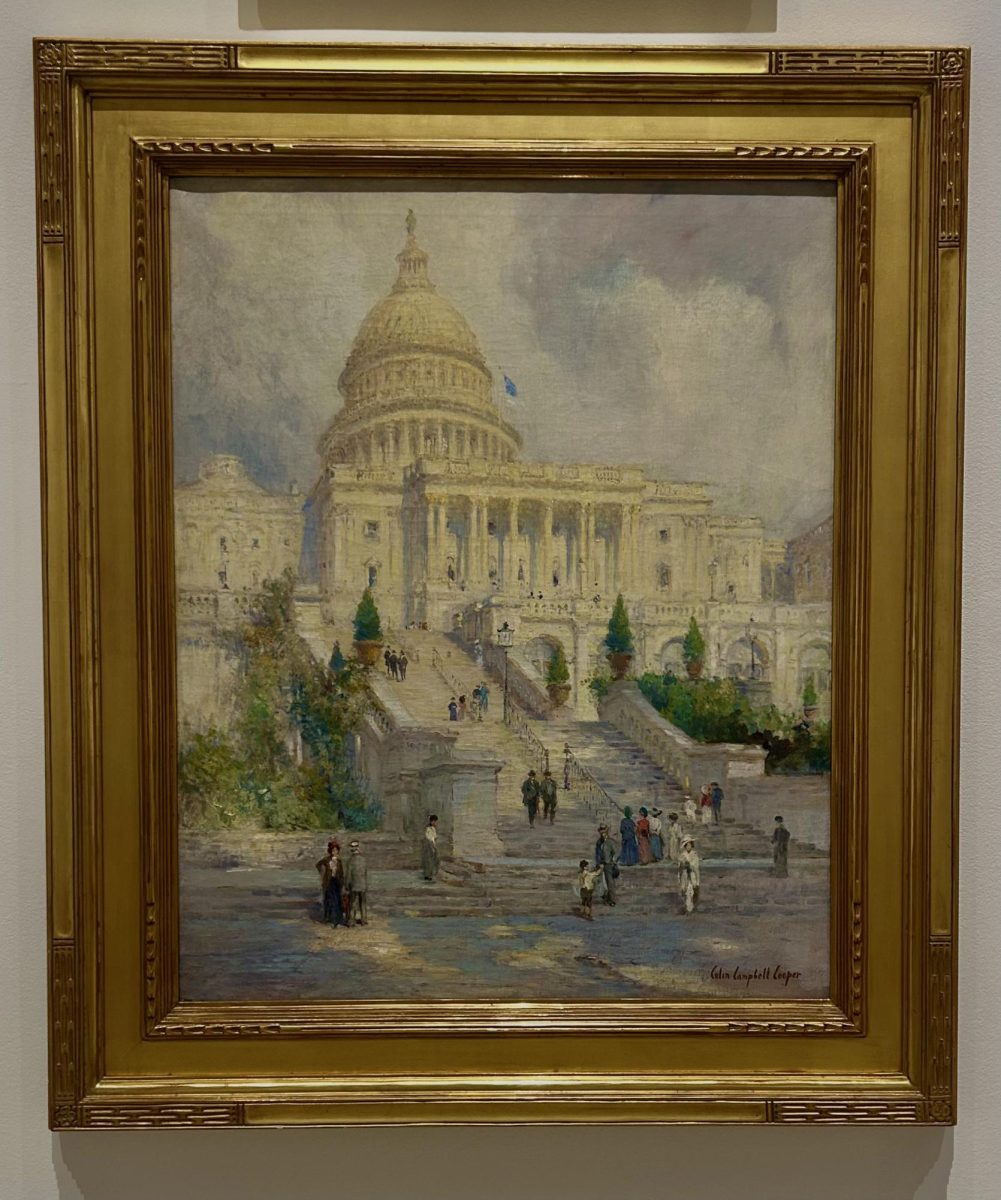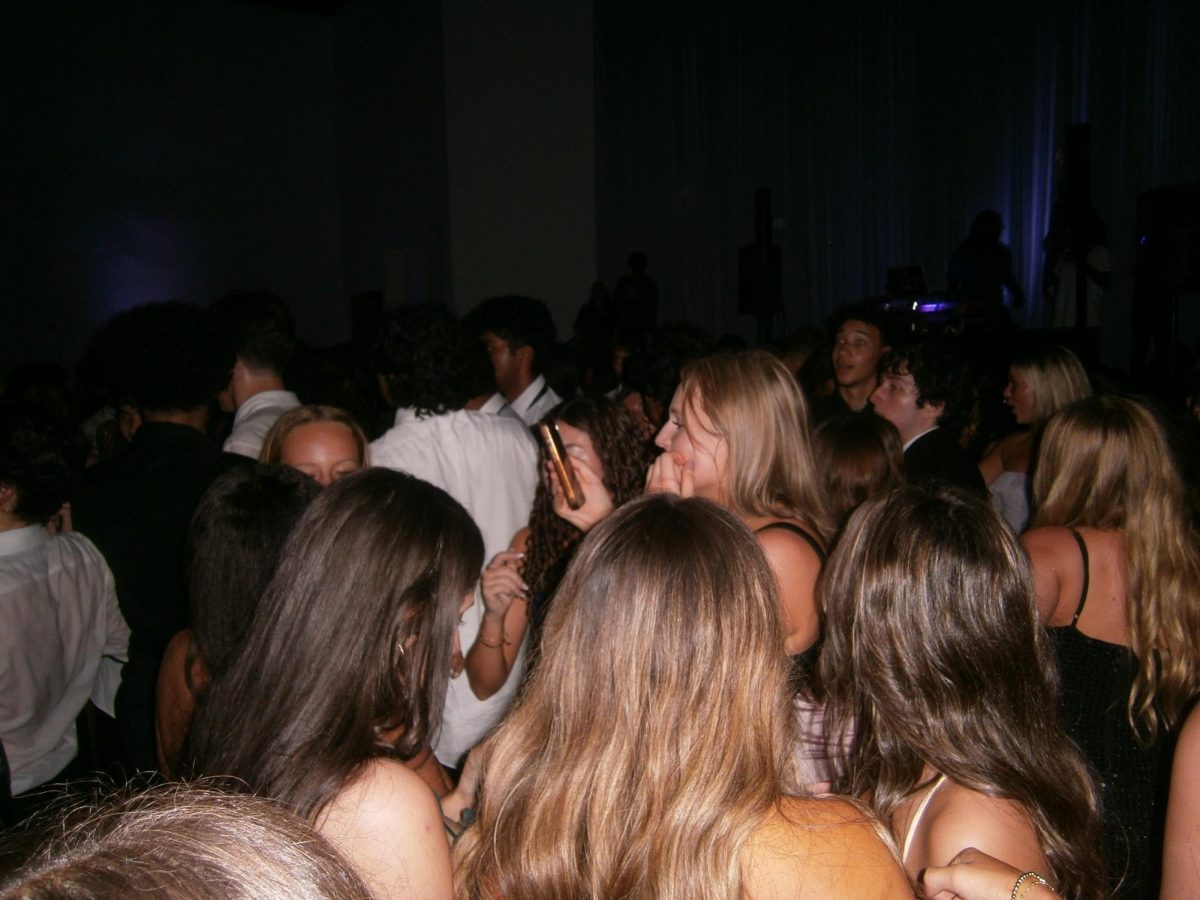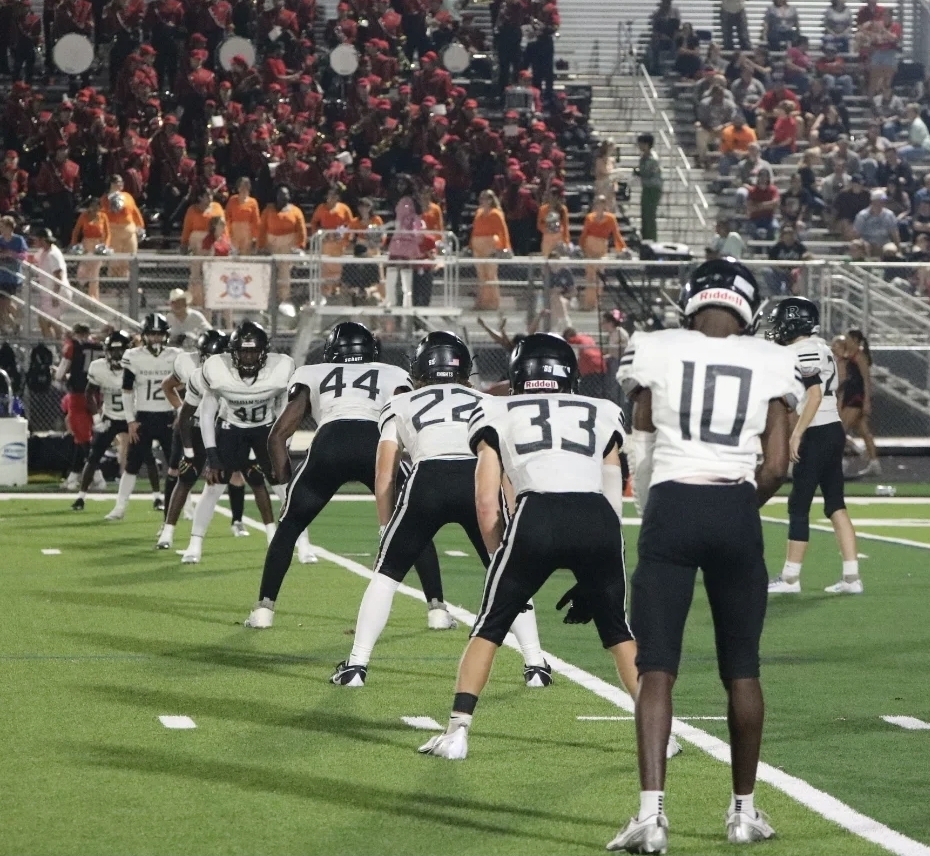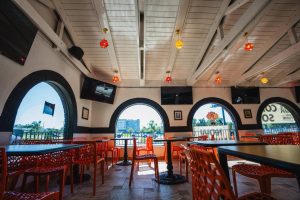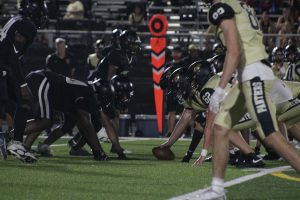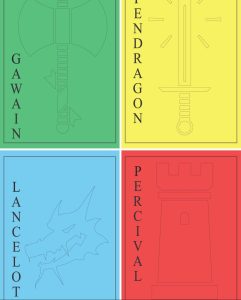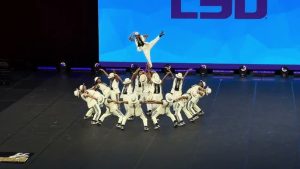Scientist turned teacher Sarah Sanford receives Lockeed Martin award
Photo A. Crews
This pre-COVID picture displays Sanford standing proudly in her classroom.
November 30, 2016
Sarah Sanford wasn’t a teacher until she was. She was an environmental scientist in the private sector until the SMART Program hosted by Bill and Melinda Gates came around and completely changed her life. No longer was she only a scientist, she was taking classes and trying to find her way into a classroom so she could start incorporating her prior knowledge into teaching.
Fast forward a few years later and Sanford won an award for her teaching skills and becoming a fellow with the National Science Teachers Association sponsored by Lockeed Martin. This fellowship will not only give her access to resources and technology, but it will also connect her to a network of teachers willing to share ideas to help better the classroom.
“When you get science professionals and teachers together to talk about what’s going on inside the scientific community and what current industries need from students for tomorrow [it gives] teachers a better idea of how to prepare their students,” Sanford said. “It’s an opportunity for me to connect with other science professionals and educators to make my content more meaningful in the classroom.”
Being one of only 30 people in the country to win this award, Sanford will get opportunities that not many have access to, in both material value and through the network of information that she has access to for the next year.
“It offers me the chance to get new perspectives on how to do things in my work. I get to talk with teachers in other parts of the country that do things differently,” she said. “I always like trying new ideas and the best place to get new ideas is other teachers so that’s what I’m looking forward to.”
Not only will Sanford have access to resources and ideas for the classroom, she will also receive feedback about her day-to-day teaching by other professional educators, administrators and scientists. In the spring, Sanford will have the opportunity to fly to Los Angeles and participate in a conference to meet with all the other fellows and administrators.
“[I’m looking forward to it because] L.A.’s one of the few places in California that I haven’t been to and meeting all these people that I’m going to be spending the year with,” she said. “I spend two hours a week communicating with these people, writing and producing new stuff so it’ll be nice to see them and talk with them face to face.”
Even through her transition into an highly regarded teacher, Sanford still keeps science near and dear to her.
“It’s what taught me to be a teacher. I tell my kids all the time, I’m a scientist first and a teacher second. I’ve been a scientist for a long time, I’m still learning to be a teacher.”

